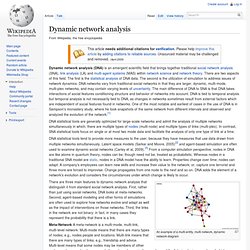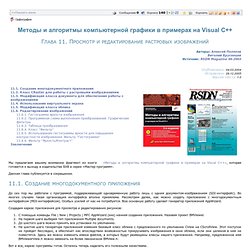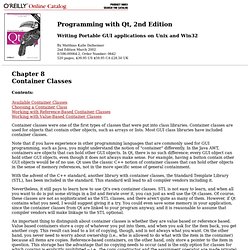

Getting Real by 37signals. Dynamic network analysis. Dynamic network analysis (DNA) is an emergent scientific field that brings together traditional social network analysis (SNA), link analysis (LA) and multi-agent systems (MAS) within network science and network theory.

There are two aspects of this field. The first is the statistical analysis of DNA data. The second is the utilization of simulation to address issues of network dynamics. DNA networks vary from traditional social networks in that they are larger, dynamic, multi-mode, multi-plex networks, and may contain varying levels of uncertainty. The main difference of DNA to SNA is that DNA takes interactions of social features conditioning structure and behavior of networks into account. DNA statistical tools tend to provide more measures to the user, because they have measures that use data drawn from multiple networks simultaneously. An example of a multi-entity, multi-network, dynamic network diagram Meta-Network A meta-network is a multi-mode, multi-link, multi-level network. Методы и алгоритмы компьютерной графики в примерах на Visual C++ Глава 11.

Просмотр и редактирование растровых изображений Авторы: Алексей ПоляковВиталий БрусенцевИсточник: RSDN Magazine #4-2003 Опубликовано: 04.03.2004Исправлено: 29.12.2005Версия текста: 1.0 Мы предлагаем вашему вниманию фрагмент из книги «Методы и алгоритмы компьютерной графики в примерах на Visual C++», которая готовится к выходу в издательстве БХВ в серии «Мастер программ». Данная глава публикуется в сокращении. 11.1. До сих пор мы работали с программой, поддерживающей одновременную работу лишь с одним документом-изображением (SDI-интерфейс). Создадим каркас приложения для просмотра и редактирования рисунков: Programming with Qt, 2nd Edition: Chapter 8: Container Classes. Nevertheless, it still pays to learn how to use Qt's own container classes.

STL is not easy to learn, and when all you want to do is put some strings in a list and iterate over it, you can just as well use the Qt classes. Of course, these classes are not as sophisticated as the STL classes, and there aren't quite as many of them. However, if Qt contains what you need, I would suggest giving it a try. You could even save some memory in your application, since the container classes from Qt are linked to your program anyway, and it is reasonable to assume that compiler vendors will make linkage to the STL optional.
An important thing to distinguish about container classes is whether they are value based or reference based. Whether you should choose a reference-based or a value-based container class depends completely on the task at hand, but it is good to know that both exist in Qt (unlike in STL, for example). Qt provides the following container classes. Basic Usage // WRONG! ... And: Git How To. Еще одна визуализация ряда алгоритмов и структур данных / Алгоритмы. Баез Дж. К., Стэй М. — Розеттский камень (разделы 4-5)